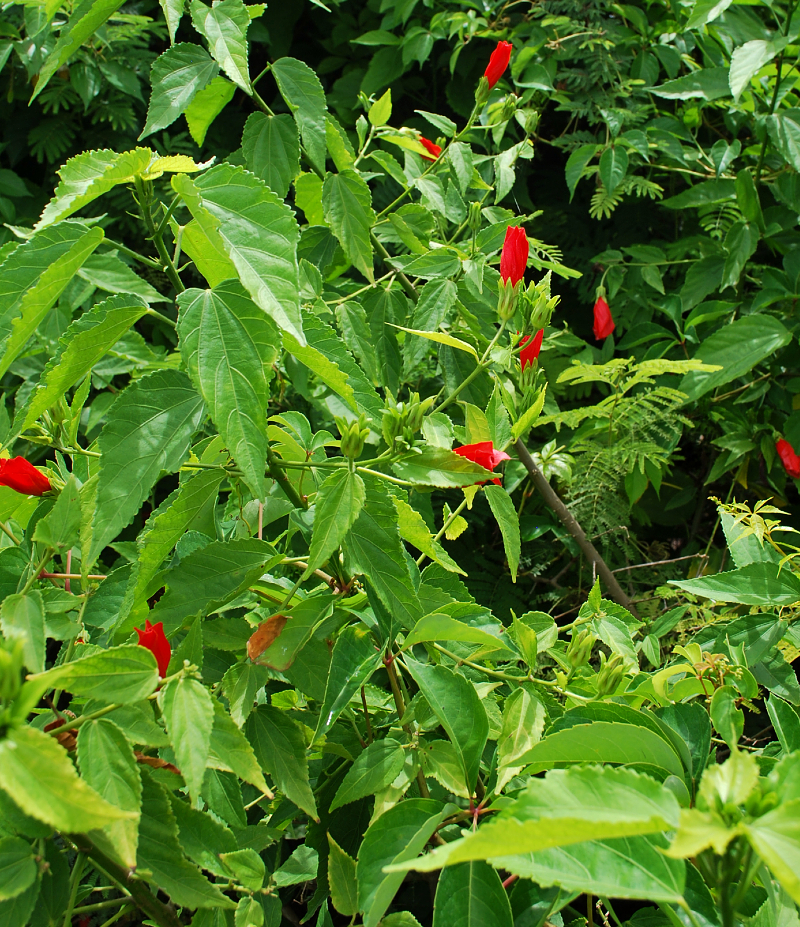Q: What is the plant in my backyard that sort of looks like a hibiscus? The flowers are red and mostly hang down and never seem to open. Is it a weed, or should I keep it? Is it Turk’s Cap? Is Turk’s Cap a good plant for warm landscapes?
Roger
Via email
Palm Beach Gardens, FL
A: An fascinating plant to identify. It has several common names; I know it as Turk’s cap or wax mallow. There are two plants known scientifically as Malvaviscus penduliflorus or Malvaviscus arboreus var. drummondii that look similar. Some botanists think hybrids may occur between the two.
Turk’s cap is indeed in the hibiscus family. Wax mallow or Malvaviscus arboreus var. drummondii originating in south and central Texas and much of the southeastern US and into Cuba and Mexico, is a spreading perennial shrub. The palm-shaped leaves are deciduous in cooler climates and have fuzzy lower leaf surfaces and heart-shaped leaf bases. The flowers are 2 to 3 inches long.

Turk’s cap mallow, Malvaviscus penduliflorus, is also a spreading shrub with oval to lance-shaped leaves with smooth surfaces on the lower surfaces. Turk’s cap mallow blooms are more significant, 4 to 5 inches long, and both hanging and upright. The native range is uncertain as this plant grows in most subtropical and tropical areas. However, some authors think it probably originated in Mexico.
Both plants are adaptable to gardens and landscapes throughout the southeastern US. They are popular pass-along plants, and I remember them in Grany Cloud’s beds. The flowers of both species look like red, closed hibiscus; they do not open fully, and the petals overlap to form a tube. There are cultivated hybrids with even larger blooms in white, pink, or red shades. The flowers of Turk’s caps are favored by hummingbirds and butterflies and appear through the summer into fall. Fruits are rarely produced.
In my opinion, Turk’s caps are keepers; it is a good plant for warm landscapes. The right place to plant Turk’s cap is sunny, with some shade in the afternoon. The soil should be well-draining. They need space and will grow to 10 or 15 feet tall by 10 feet wide. They are slightly frost-tolerant; a freeze will kill them to the ground but will return in the spring. Irrigation is needed to establish them, though they are drought tolerant after initial planting. This shrub is not salt-tolerant.
Turk’s cap will not tolerate formal pruning into geometrically shaped hedges. Prune by hand to remove any deadwood or straggly growth in the spring. Plant them in a buffer or border or as a mass planting to fill an area. Though they are not native, they are well behaved and have not shown a tendency to grow out-of-bounds in the southeastern US though there are reports of escaped growth in Australia and Hawaii from landscape waste.
This column first appeared in the Treasure Coast Newspapers.
Leave a Reply